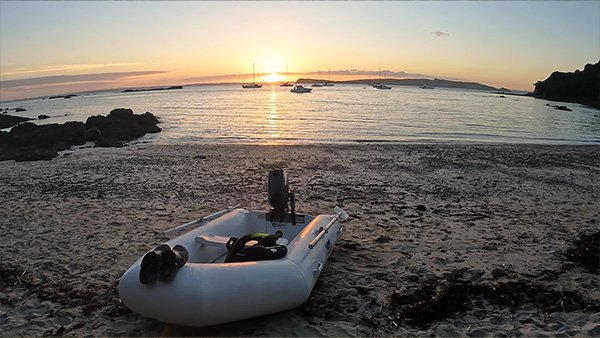
Tiritiri Matangi, Hauraki Gulf – the anchorage that has it all and more! (36°36'07"S 174°53'24"E)
October 14th, 2022
Tiritiri Matangi (referred to as Tiri from here) is one of those places that one can visit many times and one will never get tired of seeing it, exploring it, or just being there. We first visited Tiri in 2020 while we were travelling up to Northland. We were in between boats and so we went across on the ferry from Gulf Harbour, which was only a 20 minute ferry ride. Tiri is a pest free island so before getting onto the ferry, we were inspected by Pru, one of the Department of Conservation’s detection dogs, who gave us and our bags a once over to make sure we weren’t carrying any unwanted pests to Tiri.
The ferry ride was fun and once on Tiri, we had such a such a fantastic day, which went by so quickly. It was the first time I had seen some of New Zealand’s rare native birds, many which are close to extinction due to humans and introduced predators. Walking through the native forest (some old and some that had been restored) and seeing the views from the ridge track were just absolutely breath taking. Tiri provided 360 degree views of the Hauraki Gulf. In the distance, we could see the Coromandel Peninsula, Great Barrier, Little Barrier, Waiheke, Kawau to name a few. As we sat on Hobbs Beach waiting for the ferry to collect us, we were staring with envy at the boats in the anchorage and we made a promise that one day we would sail our own boat here and stay the night.
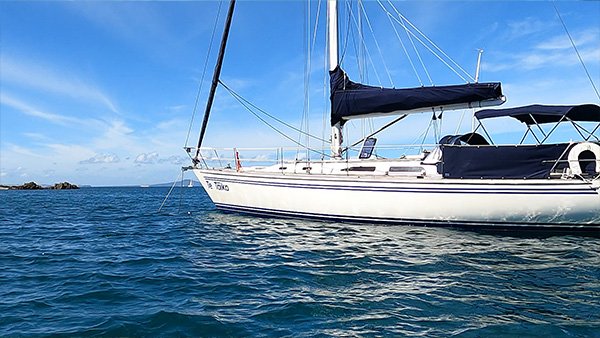 It wasn’t long before we had this opportunity. In the summer of 2021/2022 we had the chance to sail to Tiri. What made this experience even better was that we were doing it with some good friends of ours who were sailing with us on their own boat. There are only two suitable anchorages for boats on the west side of Tiri, which means that it is only really possible (and safe) to anchor there in easterly breezes. We anchored off Hobbs Beach and quickly deployed Tītī (our tender) ready for going to shore. We couldn’t wait to spend the day on Tiri with our friends and sailing there meant we were not restricted by ferry timetables but only by mother nature’s timetable – the weather conditions.
It wasn’t long before we had this opportunity. In the summer of 2021/2022 we had the chance to sail to Tiri. What made this experience even better was that we were doing it with some good friends of ours who were sailing with us on their own boat. There are only two suitable anchorages for boats on the west side of Tiri, which means that it is only really possible (and safe) to anchor there in easterly breezes. We anchored off Hobbs Beach and quickly deployed Tītī (our tender) ready for going to shore. We couldn’t wait to spend the day on Tiri with our friends and sailing there meant we were not restricted by ferry timetables but only by mother nature’s timetable – the weather conditions.
Tiri has a rich history. Previously being a sheep and cattle farm meant much of the native forest was cleared, with additional ecological effects caused by the grazing of Tiri. In 1971, Tiri became a recreation reserve with the expectation that it would be able to self-generate. Fortunately, John Craig and Neil Mitchell, scientists from Auckland University, recommended a more active approach was needed. From 1982, with the help of many volunteers, Tiri was replanted over several years, pests eradicated, and rare native birds were reintroduced.
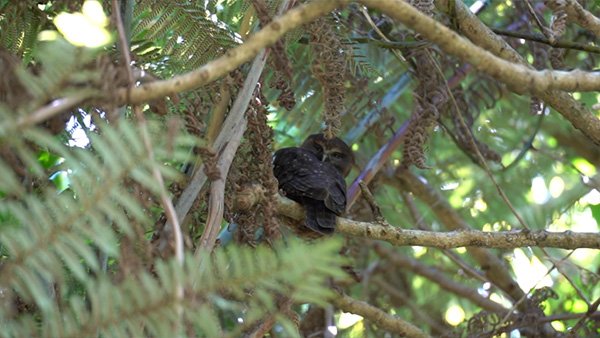 We took Tītī to the shore of Hobbs Beach crossing the clearest blue water we’ve ever seen in New Zealand and landing on a beautiful white sandy beach.
We took Tītī to the shore of Hobbs Beach crossing the clearest blue water we’ve ever seen in New Zealand and landing on a beautiful white sandy beach.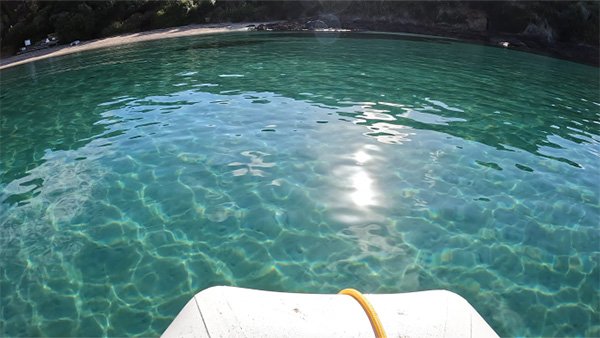 The day was hot, the water cold, and if felt so good to have the warm white sand hugging our feet as we walked along the beach. Leaving Hobbs Beach, we took the Kawerau Track, which takes you from the north end of Hobbs beach to Ridge Road. It’s a track that does have a short climb but its easy for one to take a short rest stop if needed. A pro tip: I always tell Adam that I’m just taking a minute to look for some of the native birds when I need to take a short break. You’re welcome!
The day was hot, the water cold, and if felt so good to have the warm white sand hugging our feet as we walked along the beach. Leaving Hobbs Beach, we took the Kawerau Track, which takes you from the north end of Hobbs beach to Ridge Road. It’s a track that does have a short climb but its easy for one to take a short rest stop if needed. A pro tip: I always tell Adam that I’m just taking a minute to look for some of the native birds when I need to take a short break. You’re welcome!
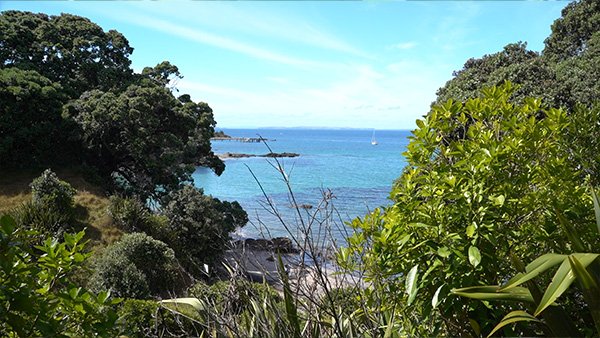 It’s a truly beautiful walk and the track winds above the beach giving you stunning views of Hobbs Beach anchorage (where we could see that Tāiko was still safety anchored) and leads into native forest. The Kawerau Track gives you many opportunities to see several of New Zealand’s rare native birds such as the Toutouwai (North Island robin), tīeke (saddleback), pōpokotea (whitehead), tītitipounamu (rifleman), ruru (morepork), korimako (bellbird), kererū (New Zealand wood pigeon), hihi (stitchbird), tūī, and kōkako. It’s not always easy to spot the kōkako but you can often hear their song which we liken to a prehistorical call. It's a rich and hauntingly beautiful call. We really love seeing and listening to the kōkako, and often, the only thing that moves us on is the kōkako disappearing into its habitat.
It’s a truly beautiful walk and the track winds above the beach giving you stunning views of Hobbs Beach anchorage (where we could see that Tāiko was still safety anchored) and leads into native forest. The Kawerau Track gives you many opportunities to see several of New Zealand’s rare native birds such as the Toutouwai (North Island robin), tīeke (saddleback), pōpokotea (whitehead), tītitipounamu (rifleman), ruru (morepork), korimako (bellbird), kererū (New Zealand wood pigeon), hihi (stitchbird), tūī, and kōkako. It’s not always easy to spot the kōkako but you can often hear their song which we liken to a prehistorical call. It's a rich and hauntingly beautiful call. We really love seeing and listening to the kōkako, and often, the only thing that moves us on is the kōkako disappearing into its habitat.
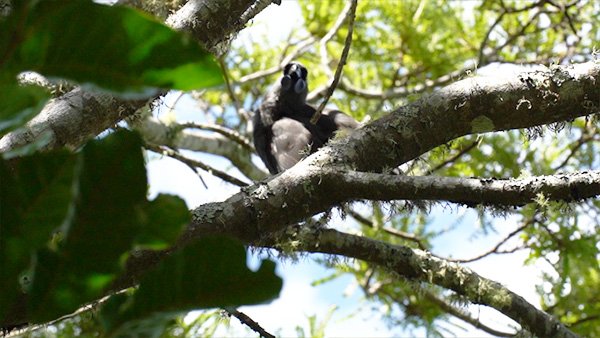
As you make your way out of the native forest, you have the option of taking a short walk to the Pā site and/or continuing on to the lighthouse. If you choose to go to the Pā site for a short detour, and continue to the lighthouse, you will not be disappointed by the beautiful panoramic views of mainland New Zealand and other islands in the Hauraki Gulf.
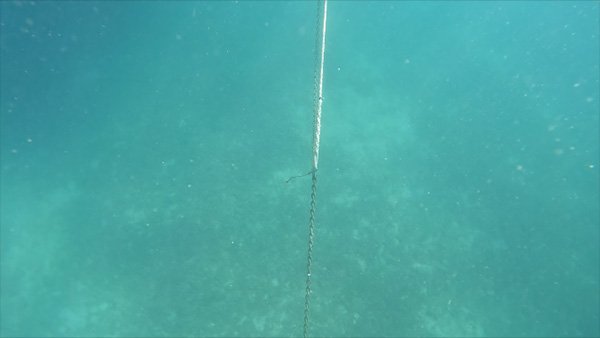
Unfortunately, we weren’t able to anchor overnight the first time we visited Tiri as the winds were not favourable. However, when the conditions were favourable, we were soon back at Tiri and we stayed the night. Staying the night gave us an opportunity to explore the island at night time and see its nocturnal life. We decided to arrive near dusk so that we could see some more birds and with a bit of luck see the kororā (little bluepenguin) return to the beach.

Kororā are just over 25 cm in length and weight approximately 1 kg. They are the smallest species of penguin. They generally spend most of the day out at sea fishing and usually only return to their burrows on shore when it is dark. If you’ve ever been sailing around the Hauraki Gulf you will often see them out fishing and feeding. They’re incredible birds, but unfortunately, like many of our native species, they have a declining population due to habitat loss and predation. There are nesting boxes on Tiri that do give you the opportunity to see the kororā (in a non-invasive manner) if they’re in their nests during the day. However, this time we didn’t get to see the kororā making their way back to their nests but as we made our way from the beach to the walking track, a kererū landed in a tree above us and gave us one heck of a fright.
Armed with our headlamps (on the red light setting only of course), we walked along Hobbs Beach Track, up the Wharf Road to the lighthouse. It was nearing dark now and we could still had a view from the top of the lighthouse area - just. We took the opportunity to take in the beautiful colours of the sunset and the magical glow of the Tiri lighthouse light. We left the lighthouse area and walked along Cable Track, before descending through the forest via Totora and Kawerau Tracks to Hobbs Beach. If you’ve watched our video on Tiri then you’ll know that we’re not telling what we saw! But what we will share with you is what the trip was like back to Tāiko on Tītī. The anchorage was teeming with fish – which we think were Pipefish. With our flashlight on we could see what must have been thousands of them. There were so many and they were jumping out of the water and almost hitting us and landing in Tītī. It was incredible to see such life existing below the water.
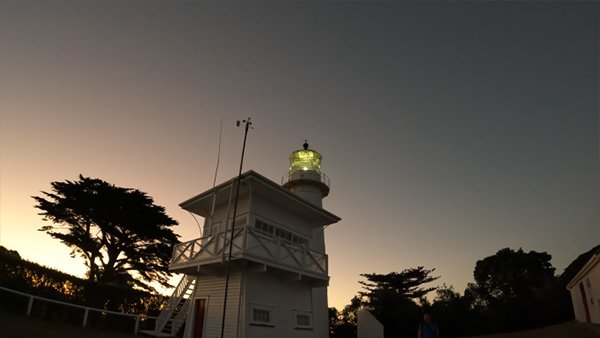
Overnight the anchorage was rolly, which made for a poor night’s sleep. We didn’t care though because staying the night meant that we could be up bright and early the next morning to listen to the dawn chorus (another thing Tiri is known for) and the opportunity to see the other parts of Tiri that we hadn’t yet seen. We decided to walk along Hobbs Beach track, up Hobbs track to Ridge Road and then north along Ridge Road. It was here that we were fortunate to see two takahē (a bird previously believed to be extinct) at a feeding station. We spent over an hour watching them eat and drink, just casually going about their business and not giving us a second thought. When the takahē had tired of us watching them and wondered back into the forest, we took that as our cue to carry on our walk. 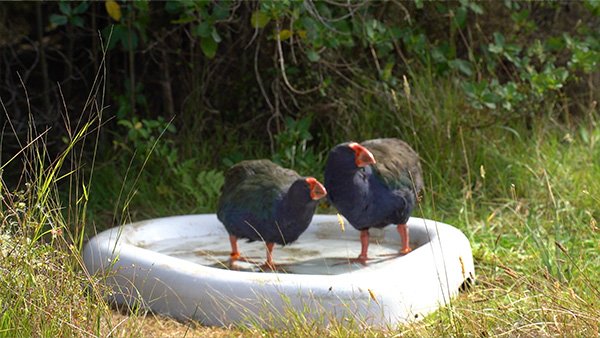
We turned onto Ngāti Paoa Track, with the hope of joining up to the East Coast track to see the beautiful east coast views. Unfortunately, the East Coast track was shut for maintenance. However, what we did get to see on our walk were some of the incredible views of the East Coast. As we made our way zig zagging down the hill we came across a wetland where two pāteke (brown teal) were swimming and feeding. Then just as we were settling into watching them, they had other ideas, and just like that they hopped up into the vegetation disappearing.
 The wetland had signs stating that other rare native species such as the banded rails, spotless crake, and fernbird were present there but we were not fortunate enough to see these birds. On a side note, we have managed to see a fern bird in a couple of the wetlands we have visited and on one occasion a banded rail ran out in front of us as we were driving from Opua to Napier. That was the only time we have seen a banded rail and we were so lucky to not have hit it with the car! That would have been traumatic for the bird and us! We have been determined to spot a matuku (Australasian bittern). To achieve this, we visited a number of wetlands on our way up the East Coast of the North Island as we drove from Napier to Opua. We didn’t achieve this goal for many reasons – one being that they’re pretty hard to spot, they’ve usually seen you before you see them (and I would like to add in here that I know expert bird watchers, enthusiasts, and ornithologists are probably wondering what made us think we were going to easily spot a matuku) but another being that with New Zealand having lost 90% of its wetlands means that there has been a massive loss of habitat for native birds who rely on wetlands to survive. Anyway, this experience of not seeing a matuku is another story for another day, which I will tell but for now I digress, so back to Tiri.
The wetland had signs stating that other rare native species such as the banded rails, spotless crake, and fernbird were present there but we were not fortunate enough to see these birds. On a side note, we have managed to see a fern bird in a couple of the wetlands we have visited and on one occasion a banded rail ran out in front of us as we were driving from Opua to Napier. That was the only time we have seen a banded rail and we were so lucky to not have hit it with the car! That would have been traumatic for the bird and us! We have been determined to spot a matuku (Australasian bittern). To achieve this, we visited a number of wetlands on our way up the East Coast of the North Island as we drove from Napier to Opua. We didn’t achieve this goal for many reasons – one being that they’re pretty hard to spot, they’ve usually seen you before you see them (and I would like to add in here that I know expert bird watchers, enthusiasts, and ornithologists are probably wondering what made us think we were going to easily spot a matuku) but another being that with New Zealand having lost 90% of its wetlands means that there has been a massive loss of habitat for native birds who rely on wetlands to survive. Anyway, this experience of not seeing a matuku is another story for another day, which I will tell but for now I digress, so back to Tiri.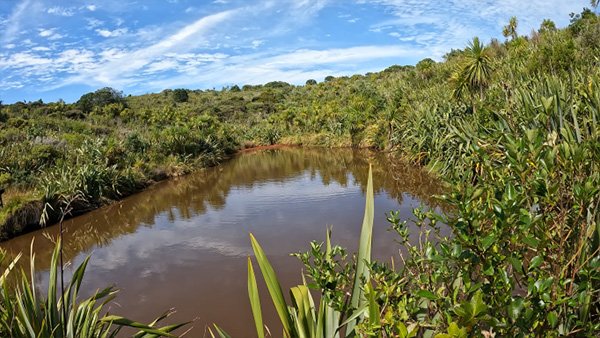
As it takes a while to get to this area of Tiri, we didn’t see many people on this side of the island. That’s one of the benefits of not being dependent on time. We back tracked to Hobbs Beach via the Totora track and Kawerau Track making our way back to Tītī and Tāiko before weighing anchor and heading back to the marina. We were both very happy sailors.
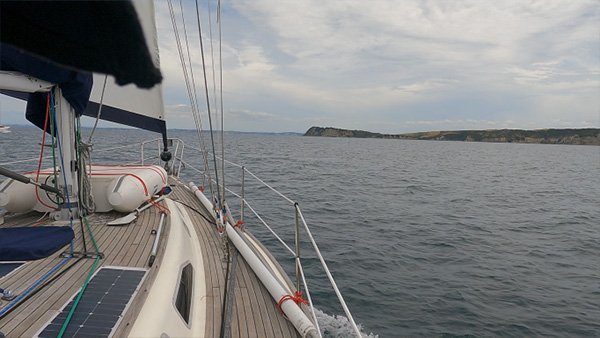 We did attempt to sail to Tiri a third time with the hope of anchoring overnight but we never made it. Our engine died after air entered the fuel line. This was the time Adam was showing me how to use the prop walk but this is yet a story for another day.
We did attempt to sail to Tiri a third time with the hope of anchoring overnight but we never made it. Our engine died after air entered the fuel line. This was the time Adam was showing me how to use the prop walk but this is yet a story for another day.
Most of the birds that I have mentioned in this blog about Tiri have had a difficult existence since human arrival. Pre-human arrival, the only mammals that New Zealand had were native bats. This meant that the native species adapted to using camouflage and being able to freeze to avoid being seen by any predators. However, this was no defense against humans and the mammalian predators that they introduced, and with active forest clearance, many of these species lost their habitat. Many of New Zealand’s native species quickly became extinct with others being on the brink of extinction. If you want to learn more about each of these birds, watch our video on Tiri.
But while I have you here, I do want to take the opportunity to share with you some things I have learned about some of these birds before finishing this blog post.
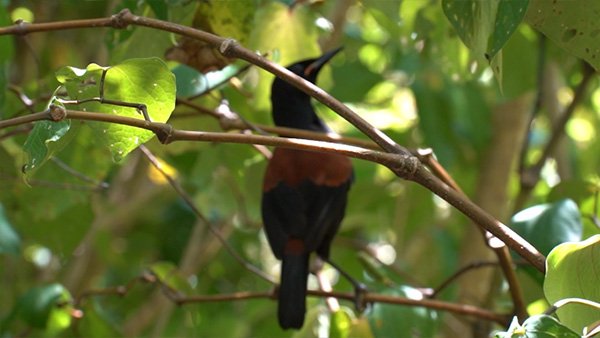 The endemic New Zealand wattlebirds are an ancient family of birds. The huia bird became extinct not long after European arrival and the tīeke and the kōkako are the only two remaining species that belong to this family. Therefore, getting an opportunity to see these two rare birds is a real privilege. The rifleman is New Zealand smallest bird measuring just 8 cm and it’s always such a treat to spot one. It’s not much smaller than our native riroriro (grey warbler) so you may often hear Adam and I debating as to whether I saw a rifleman or a grey warbler! They are difficult to see but it’s also very difficult to film or take photos of them because they’re always on the move. Riflemen rely on old growth forest for their habitat which means they are now confined to certain places.
The endemic New Zealand wattlebirds are an ancient family of birds. The huia bird became extinct not long after European arrival and the tīeke and the kōkako are the only two remaining species that belong to this family. Therefore, getting an opportunity to see these two rare birds is a real privilege. The rifleman is New Zealand smallest bird measuring just 8 cm and it’s always such a treat to spot one. It’s not much smaller than our native riroriro (grey warbler) so you may often hear Adam and I debating as to whether I saw a rifleman or a grey warbler! They are difficult to see but it’s also very difficult to film or take photos of them because they’re always on the move. Riflemen rely on old growth forest for their habitat which means they are now confined to certain places.
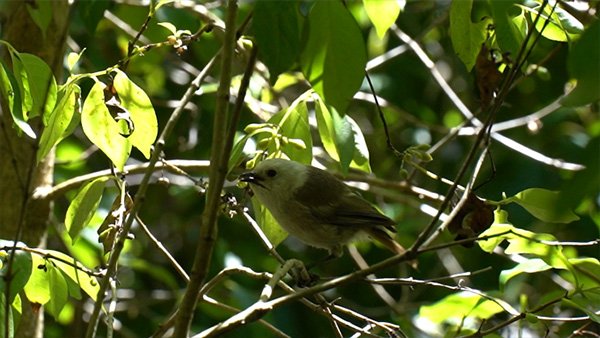
On the North Island, the whitehead plays an important role in the lifecycle of the long-tailed cuckoo, with the yellowhead and brown creeper filling this role on the South Island. At just 15 cm long, it’s hard to imagine how such a small bird can take care of big chick but like everything with mother nature, she’s worked it all out. It is this type of relationship (one of the many in nature) where one species relies on another to survive that really resonates with me because not only does it give one a glimpse into the complex interdependent relationships and finely balanced ecosystems that nature has, but it also means that the loss of one bird species can result in the loss of another. When you have an opportunity to have a glimpse into the past, or at least an idea of what it would have been like, it makes one more cognizant of what we have lost both nationally and globally because these intricate relationships and ecosystems have either been destroyed or harmed. Another example of these intricate relationships is the kererū. With the extinction of moa, which were New Zealand’s largest birds, has resulted in a very important job now solely being the responsibility of the kererū – that is, it is the only remaining bird which is large enough to disperse some of our native forests larger seeds such as the tawa. Without kererū, our native forests would be in even more trouble than they are now.
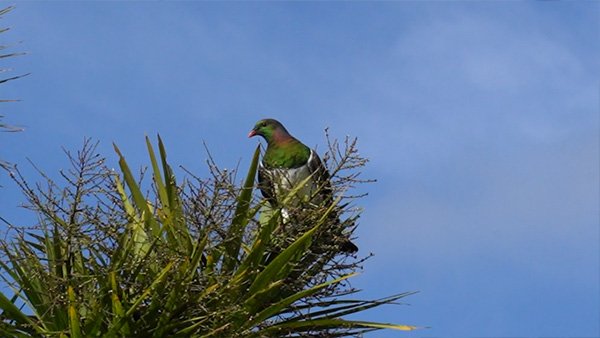
Some of what I have shared here are my thoughts. They are my thoughts I have when I am reflecting on the place I’ve just been to, what I’ve seen, the significance of what is there, and how fortunate I’ve been to see it but mostly why it’s even more important to protect it. I’ve shared with you some facts that I have learned about a few of the birds I have mentioned in the hope that you can get a sense of my appreciation of them and the forest they live in, and that it encourages you to take a trip to Tiri or Rotoroa to see them. I know that some of what I’ve said may seem a bit too deep and miserable, and I guess because at times for me it can be (being married to a forest ecologist doesn’t help). BUT places like Tiri and Rotoroa remind me that there is hope and there are possibilities. So, I’d like to end off on a lighter note. Along with learning about these birds, a fun fact that I’ve also learned is that Takahē have a highly fibrous diet which means they can poo up to 9 m a day! What an incredible constitution!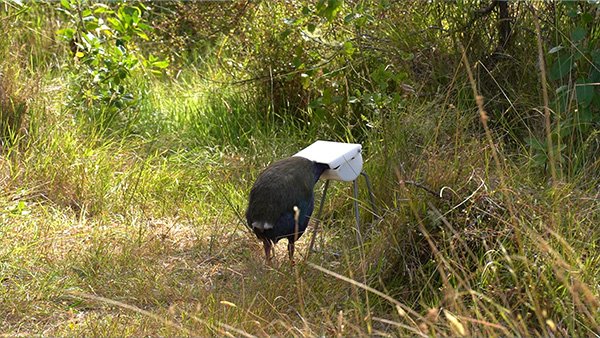
Having an opportunity to see places like Tiri and Rotoroa makes us grateful for the people that gave their time and were determined to restore and protect what is left so that we, and future generations, could see them. We would like to thank the people who did, and continue to, work hard to make these places the sanctuaries they are. Tiri with its white sandy beaches, crystal clear waters, native forest and birds – what else could you ask for in an anchorage? If you can’t sail to Tiri then you can always catch the ferry from downtown Auckland or Gulf Harbour. You will not be disappointed.
Thanks for joining me as I reflect on my time visiting Tiri and I hope I’ve given you a sense of what it’s like.
Take care,
Vicki
Information about birds and Tiri sourced from Tiritiri Matangi website, NZ Birds online, and Department of Conservation